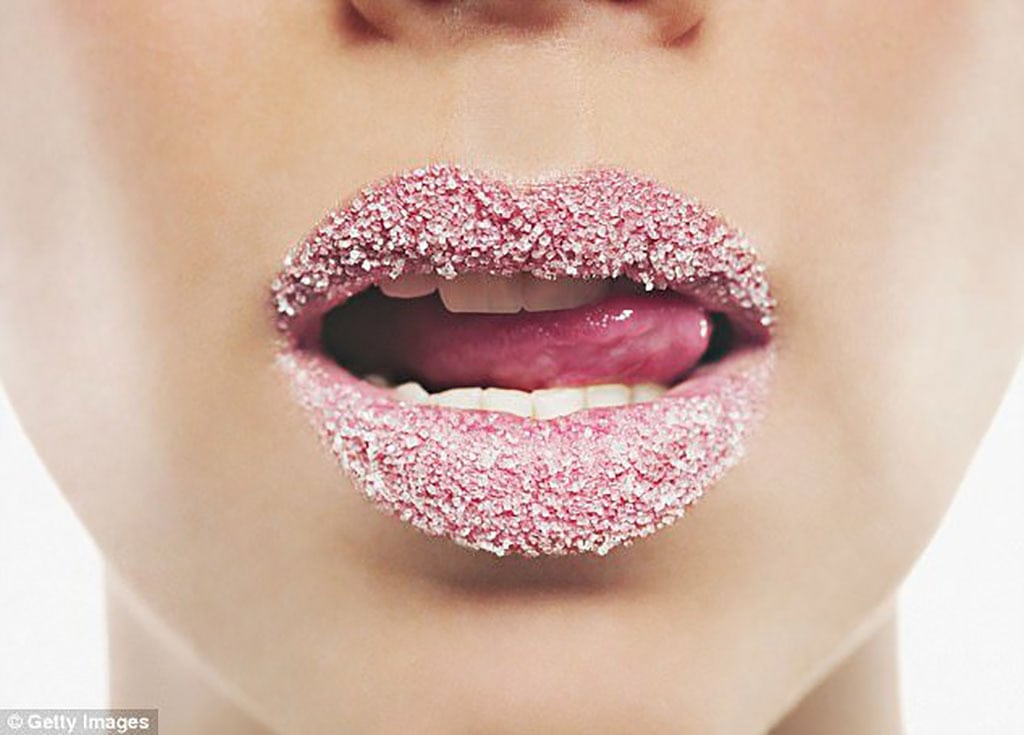A SLAVE TO THE SWEET STUFF? This simple 12-step plan will help you quit sugar (and you can STILL eat chocolate)
February 10, 2017Sugary treats can help you gain weight, leave you feeling tired, give you bad skin as well as lead to more serious health risks of diabetes, heart disease, dementia and some cancers
DO you find yourself reaching for a sweet treat all too often?
You know it’s bad for you but, still, the cravings kick in and you tell yourself ‘I’ll just have the one biscuit and I will be good tomorrow’.
But that doesn’t happen.
Apart from a rush of energy and the pure, delicious enjoyment they bring, there is not much else about sugary snacks that is good for us.
In fact, they can help you gain weight, leave you feeling tired, give you acne and age your skin.
Not to mention the more serious health risks of diabetes, heart disease, dementia and some cancers.
The 12 steps, put together by nutritionists, will help you ditch the habit once and for all…
1. Portion Control

Eating meals full of green veg and good protein will kick the sugar cravings
Cassandra Barns, nutritionist, said: “Aim for foods that have a low glycaemic load, as their impact on blood sugar level is minimal and you’ll be less likely to experience blood glucose highs and lows that will have you reaching for the cookie jar.
“Make sure each meal includes protein, non-starchy vegetables and unrefined carbohydrates.
“Limit sweet tasting veg like parsnips, potato and carrots and opt for green veg like broccoli and spinach, ideally making up half your plate.
“Good protein like lean turkey, eggs, fish, beans are digested slowly and make you feel fuller for longer, carbs should be wholegrain varieties for the same reason.”
2. Don’t skip breakfast
According to Shona Wilkinson, nutritionist at Superfooduk.com said: “If we don’t have breakfast, often by 11am or midday, we become hungry and crave sugar, as our blood sugar levels drop too low.
“Try two poached eggs on a slice of wholemeal bread with some rocket leaves or a pot of sugar-free yoghurt with nuts and berries.”
3. Think about the snacks you choose

Think about the snacks you are choosing, reach for a healthier alternative like berries or avocado
‘Cassandra said: “A healthy snack between meals can help while you’re giving up sugar, as it stops your sugar levels dropping too low, which can cause sweet cravings.
“Good examples include, two oatcakes topped with a tablespoon of humus or guacamole or cottage cheese and half an avocado.
“Avoid bananas and grapes and opt for berries as they are naturally low in sugar.”
But if you want to quit snacking for good you need to be able to identify your behaviours and stop them, says psychologist Corrine Sweet.
She added: “It is entirely possible to retrain yourself to break old, bad habits and adopt new, positive ones, to help you curb your food cravings.
“You need to identify your behaviours and make a decision to stop them. Then replace them with a positive strategy for curbing old habit patterns. This may take effort and time, as we often hang on to what is familiar, but if you stick to it, you will soon be reaping the rewards for a little thoughtful decision-making, retraining and application of willpower.”
4. Limit alcohol

Drinking contains more sugar than you think and makes you crave sweet treats the next day
“Alcohol raises blood sugar, but being a liquid, it is even more quickly absorbed into the bloodstream than sugar,” says Marilyn Glenville, nutritionist and author of Natural Alternatives to Sugar.
“Alcohol also contains more calories than sugar – seven calories per gram versus four calories per gram.
“Alcohol binges are a classic way to set up a cycle of cravings for sugary, stodgy foods the day after.”
5. Look after your gut
Cassandra explains: “Overgrowth of unhelpful yeasts in the gut, such as candida, can contribute to, or exacerbate sugar cravings.
“Ironically, eating sugar and high-starch foods makes the candida overgrowth worse, so we become stuck in a catch-22 situation.
“To help solve this, try taking a high-strength, good quality probiotic supplement.”
6. Go easy on the tea and coffee

Tea and coffee contains caffeine, which can make you crave sugar later on when it wears off
Marilyn said: “Caffeine is a stimulant that causes our body’s stress hormones such as cortisol and adrenaline to be released, which in turn cause a cycle of energy dips and peaks, and make you more likely to crave sugar later on.
“Decaffeinated coffee and tea contains other stimulants, so try better options such as naturally caffeine free rooibos tea.”
7. Use natural alternatives
Shona suggests trying alternatives like Xylitol or stevia.
She said: “Xylitol is a naturally sweet substance found in many plants. In commercial preparations, it is found in granules and looks and tastes like sugar, although slightly less sweet.
“Stevia is a substance extracted from the leaf of the stevia plant.
“It is an intensely sweet substance and very little is needed to give a sweet taste – it has very few calories and minimal impact on blood glucose.”

Natural alternatives like stevia are available as sugar replacements
8. Treat yourself
Cassandra says you can treat yourself to three squares of good quality dark chocolate, minimum 70% cocoa.
She added: “This amount will only contain a relatively small amount of sugar, and there is also evidence that dark chocolate has health benefits, or try a small pot of sugar-free plain yoghurt, with a teaspoon of pure cocoa or raw cacao powder.”
9. Use supplements to control cravings
Cassandra advises you take a chromium supplement like Quest Vitamin’s Ecuigluco.
She said: “This supplement also contains vitamin B3, which works closely together with chromium as well as green coffee extract to boost your metabolism.
“Chromium can take a month or longer to have its full effect, so persevere or start taking chromium before attempting to give up sugar.”
10. Exercise

Exercise makes you feel more energised, so you will be less likely to crave that sugar rush
“Moderate exercise helps us to feel energised, less sluggish, and healthier, ” says Cassandra.
“It can help to control stress levels and also support blood sugar control to avoid dips that will induce cravings.”
11. Reduce stress
According to Dr Glenville, stress is one of the primary triggers for sugar cravings.
She said: “So try in any way you can to reduce stress, whether it is by delegating or reducing your workload, taking some gentle exercise, or practising yoga or meditation to help you relax.
“Reduced stress will often mean better sleep as well, which will mean better energy levels the next day.”
12. Take Vitamin D
Vitamin D can boost serotonin levels, you happy hormone, according to Cassandra.
She said: “When serotonin levels are low, most people immediately turn to simple carbohydrates like sugar and chocolate.”

